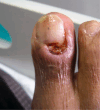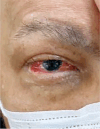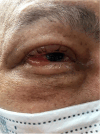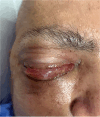Invasive fusariosis
- PMID: 37937988
- PMCID: PMC10732078
- DOI: 10.1128/cmr.00159-22
Invasive fusariosis
Abstract
Invasive fusariosis is a serious invasive fungal disease, affecting immunocompetent and, more frequently, immunocompromised patients. Localized disease is the typical clinical form in immunocompetent patients. Immunocompromised hosts at elevated risk of developing invasive fusariosis are patients with acute leukemia receiving chemotherapeutic regimens for remission induction, and those undergoing allogeneic hematopoietic cell transplant. In this setting, the infection is usually disseminated with positive blood cultures, multiple painful metastatic skin lesions, and lung involvement. Currently available antifungal agents have poor in vitro activity against Fusarium species, but a clear-cut correlation between in vitro activity and clinical effectiveness does not exist. The outcome of invasive fusariosis is largely dependent on the resolution of immunosuppression, especially neutrophil recovery in neutropenic patients.
Keywords: Fusarium; fungal infection; fusariosis; immunocompromised.
Conflict of interest statement
M.N. has received honoraria as a speaker or consultant from Pfizer, MSD, Cidara, Knight, F2G, Teva, and Astellas. E.A. has no competing interests.
Figures
















References
-
- Anaissie EJ, Kuchar RT, Rex JH, Francesconi A, Kasai M, Müller FC, Lozano‐Chiu M, Summerbell RC, Dignani MC, Chanock SJ, Walsh TJ. 2001. Fusariosis associated with pathogenic Fusarium species colonization of a hospital water system: a new paradigm for the epidemiology of opportunistic mold infections . CLIN INFECT DIS 33:1871–1878. doi:10.1086/324501 - DOI - PubMed
Publication types
MeSH terms
Substances
LinkOut - more resources
Full Text Sources

